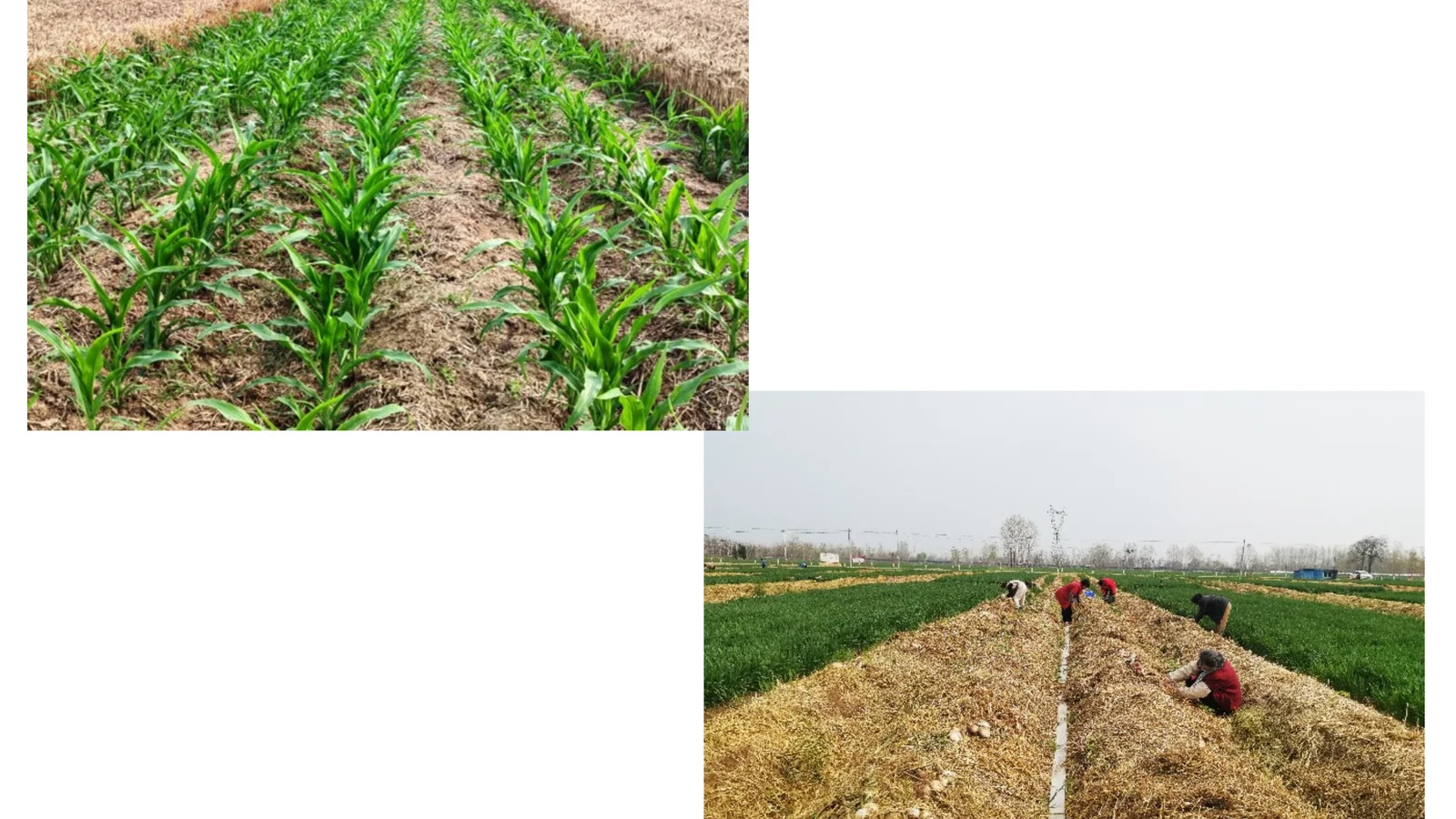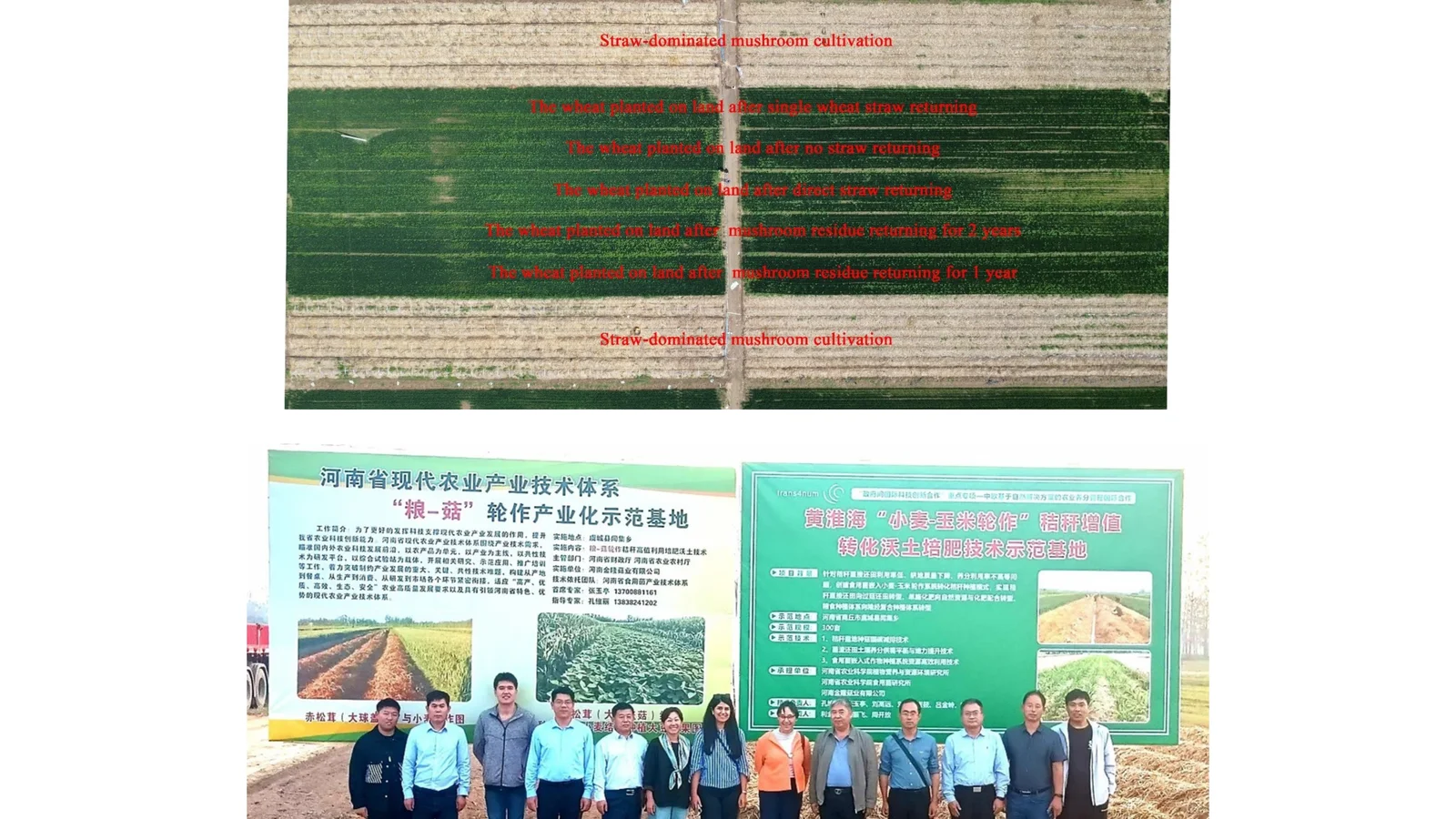Henan Province
Description
The NBS site of the North China Plain located in the southern part of the plain, within He'nan Province, experiences a continental monsoon climate that shifts from the north subtropical zone to the warm temperate zone. This area is the largest agricultural and food processing Hub, spanning 16.7 million hectares, of which about 50% is dedicated to agriculture. The arable land, totaling 8.2 million hectares, represents 6.5% of China's total, contributing approximately $100 billion annually to the gross agricultural product and playing a crucial role in ensuring China's food security.
The annual temperature stands at 13.6℃, with an annual rainfall of 852 cm, predominantly from June to August. The frost-free period extends to 243 days, conducive to the growth of various crops. The large-scale agricultural production and traditional crop rotation systems render it a quintessential example of China's agriculture.
He'nan boasts an extremely rich resource of straw, with annual production of crop residues estimated at approximately 85 million tons. It is well - known that straw is rich in organic matter and other nutrients, and its incorporation into the soil can improve soil structure, enhance soil nutrient content, and promote crop nutrient absorption, after decomposition.
Challenges
Due to its low cost, high efficiency, and simplicity of operation, direct straw crushing and returning to the field has become the mainstream and widely adopted practice in Henan's agricultural production, with a return rate as high as 60%. However, constrained by factors such as climate, soil types, and immature technology, direct incorporation of straw into the field has led to various issues, including low straw degradation rates, poor seed quality, high soil pathogen populations, and high greenhouse gas emissions.
In recent years, the incorporation of straw into the field by making biochar, by making carbon - containing organic fertilizer, by deeply ploughed with a decomposing agent and by cultivating edible mushroom have become main technical approaches for efficient utilization of straw resources in agricultural production (Wang et al., 2021a).
Among these, straw - dominated edible mushroom cultivation is an emerging technology for straw resource utilization that has arisen with the development of edible mushroom industry techniques. It primarily involves using straw as the main substrate for cultivating Stropharia rugoso-annulata (a straw-rotting fungus) and returning the mushroom residue to the field following the mushroom harvest.
trans4num NBS test site
The objectives of this site are to: 1) Develop a novel NBS planting model that incorporates the edible mushroom into the wheat - maize rotation system of the North China Plain; 2) Research the supporting technologies based on the NBS planting model; 3) Establish a nutrient decision support system for the NBS planting model; 4) Conduct a systematic evaluation of the economic, social, and ecological benefits of this model, and formulate the relevant technical standards
The 1st technology: high-efficiency open-field edible mushroom cultivation technology focuses on the research of simplified straw collection and processing methods, the formulation of suitable straw - dominated substrates for the mushroom cultivation, appropriate sowing and management practices for edible fungi, as well as the impact of edible fungi cultivation on greenhouse gas emissions.
The 2nd technology: efficient utilization technology for spent mushroom residue nutrients explores appropriate methods for utilizing edible mushroom residue in farmland such as no - tillage, rotary tillage, etc., and the optimal ratio of organic to inorganic fertilization, providing a rational management plan for mushroom residue utilization and formulating technical standards.
The 3rd technology: efficient utilization technology for light and thermal resources focuses on identifying suitable crop varieties for this planting model, such as spring - sown maize and soybeans, and assessing the utilization of light and thermal resources during the crop growth period, to achieve a high multiple cropping index in a rotational cropping system.
The implementation of the NBS model facilitates the transition from straw direct return to field to mushroom - cultivated straw return, from fertilizer - centric input to a combination of natural nutrient resources and chemical fertilizers, and from a single grain cultivation system to a diversified grain - economic crop cultivation system.
Multimedia products
Poster: Henan NBS Site Augumenting the stability of soil aggregate carbon with nutrient management in worldwide croplands Can high-yielding maize system decrease greenhouse gas emissions largely while simultaneously enhancing economic and ecosystem benefits through the 'rhizobiont' concept? Co-benefits for net carbon emissions and rice yields through improved management of organic nitrogen and water Nature-based nutrient management through returning agricultural organic waste enhances soil aggregate organic carbon stability
Henan NBS Team
Weilei Kong
Yuting Zhang
Gaoyuan Liu
Jinling LV
Qin Liu
Xiao Song
Xiao Cui


